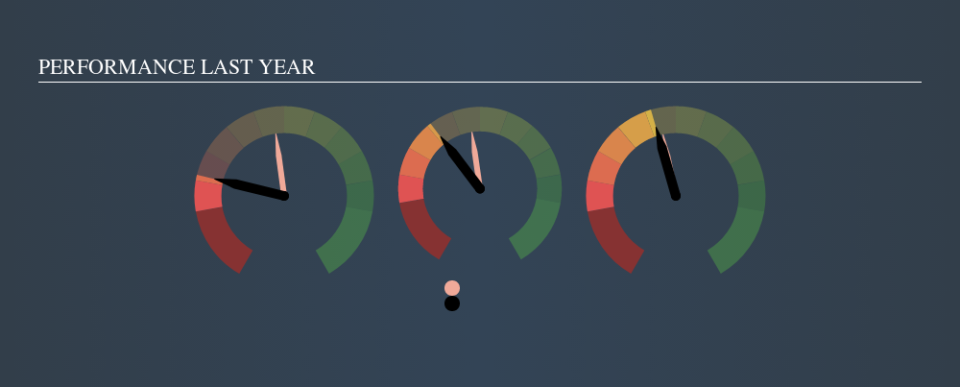What We Think Of Royal Mail plc’s (LON:RMG) Investment Potential

Today we'll look at Royal Mail plc (LON:RMG) and reflect on its potential as an investment. To be precise, we'll consider its Return On Capital Employed (ROCE), as that will inform our view of the quality of the business.
First of all, we'll work out how to calculate ROCE. Second, we'll look at its ROCE compared to similar companies. And finally, we'll look at how its current liabilities are impacting its ROCE.
Understanding Return On Capital Employed (ROCE)
ROCE measures the 'return' (pre-tax profit) a company generates from capital employed in its business. Generally speaking a higher ROCE is better. Overall, it is a valuable metric that has its flaws. Author Edwin Whiting says to be careful when comparing the ROCE of different businesses, since 'No two businesses are exactly alike.
So, How Do We Calculate ROCE?
The formula for calculating the return on capital employed is:
Return on Capital Employed = Earnings Before Interest and Tax (EBIT) ÷ (Total Assets - Current Liabilities)
Or for Royal Mail:
0.10 = UK£545m ÷ (UK£7.4b - UK£2.0b) (Based on the trailing twelve months to March 2019.)
Therefore, Royal Mail has an ROCE of 10%.
See our latest analysis for Royal Mail
Is Royal Mail's ROCE Good?
When making comparisons between similar businesses, investors may find ROCE useful. It appears that Royal Mail's ROCE is fairly close to the Logistics industry average of 9.9%. Independently of how Royal Mail compares to its industry, its ROCE in absolute terms appears decent, and the company may be worthy of closer investigation.
You can click on the image below to see (in greater detail) how Royal Mail's past growth compares to other companies.
Remember that this metric is backwards looking - it shows what has happened in the past, and does not accurately predict the future. ROCE can be deceptive for cyclical businesses, as returns can look incredible in boom times, and terribly low in downturns. ROCE is only a point-in-time measure. What happens in the future is pretty important for investors, so we have prepared a free report on analyst forecasts for Royal Mail.
What Are Current Liabilities, And How Do They Affect Royal Mail's ROCE?
Current liabilities are short term bills and invoices that need to be paid in 12 months or less. The ROCE equation subtracts current liabilities from capital employed, so a company with a lot of current liabilities appears to have less capital employed, and a higher ROCE than otherwise. To check the impact of this, we calculate if a company has high current liabilities relative to its total assets.
Royal Mail has total liabilities of UK£2.0b and total assets of UK£7.4b. Therefore its current liabilities are equivalent to approximately 27% of its total assets. Low current liabilities are not boosting the ROCE too much.
What We Can Learn From Royal Mail's ROCE
With that in mind, Royal Mail's ROCE appears pretty good. Royal Mail shapes up well under this analysis, but it is far from the only business delivering excellent numbers . You might also want to check this free collection of companies delivering excellent earnings growth.
If you are like me, then you will not want to miss this free list of growing companies that insiders are buying.
We aim to bring you long-term focused research analysis driven by fundamental data. Note that our analysis may not factor in the latest price-sensitive company announcements or qualitative material.
If you spot an error that warrants correction, please contact the editor at editorial-team@simplywallst.com. This article by Simply Wall St is general in nature. It does not constitute a recommendation to buy or sell any stock, and does not take account of your objectives, or your financial situation. Simply Wall St has no position in the stocks mentioned. Thank you for reading.

